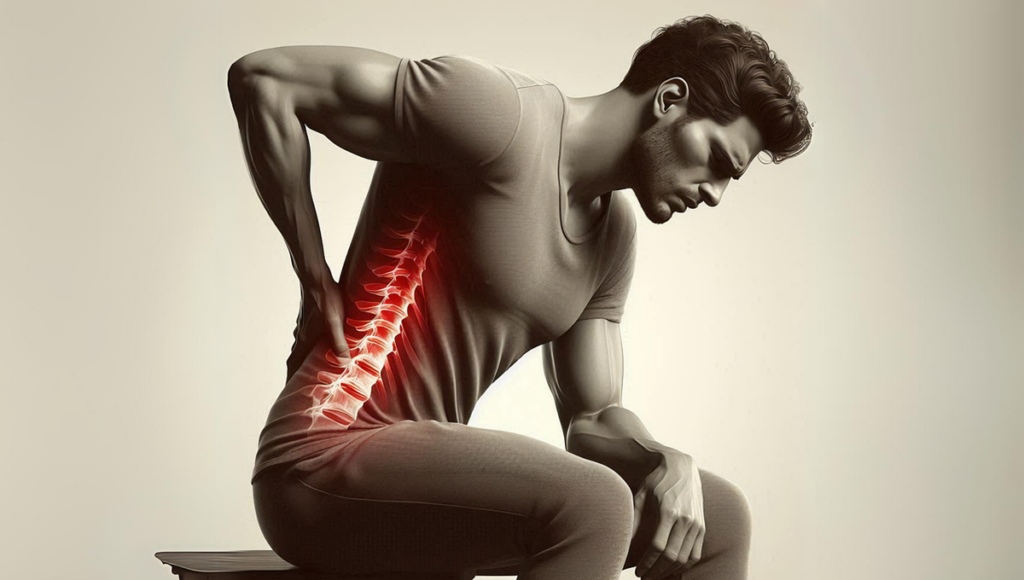
Non-Surgical Blog
Ice or Heat for Back Pain: What Works Best?
April 13, 2025

Key Highlights
- Heat and ice therapy are effective, accessible treatments for back pain.
- It’s crucial to apply ice or heat correctly to avoid skin damage.
- Consult a healthcare professional to determine the most appropriate therapy for your specific back pain.
Back pain is a prevalent condition that affects millions, and finding effective relief is crucial for maintaining a good quality of life. While medications and other treatments have their place, heat therapy and ice therapy are simple, readily available options that can provide significant relief.
This blog explores the science behind these therapies, their practical application, and how to optimize their use for different types of back pain.
Understanding Back Pain and Its Causes
Lower back pain, in particular, can be debilitating, stemming from various factors. From sudden strains and sprains to underlying conditions like arthritis or herniated discs, the causes of back pain are diverse. Understanding the root of your back pain is vital in determining the most effective course of treatment.
Acute injury, often resulting from sudden movements, trauma, or improper lifting, often leads to inflammation and intense pain. Conversely, chronic low back pain is characterized by persistent discomfort that lingers for weeks or even months. Identifying the nature of your back pain helps determine if ice or heat is the right therapy.
Types of Back Pain: Acute vs. Chronic
Acute low back pain generally refers to pain that lasts for a short period, typically a few days to a few weeks. It usually occurs as a result of a sudden injury, such as a muscle strain or ligament sprain. This type of pain is usually sharp and intense and tends to improve gradually over time.
Chronic back pain, on the other hand, persists for an extended duration, often exceeding three months. It’s frequently complex, involving various factors like degenerative disc disease, spinal stenosis, or chronic conditions like arthritis. Unlike acute pain, chronic pain can be dull and aching, and it may fluctuate in intensity.
Understanding which type of back pain you’re experiencing is crucial because acute and chronic pain often respond differently to treatments like ice and heat therapy.
Common Triggers for Back Pain Episodes
While the specific causes of back pain can vary, several common triggers can lead to painful episodes. Muscle spasms, often caused by overuse, dehydration, or electrolyte imbalances, are a frequent culprit, characterized by sudden, involuntary muscle contractions that cause pain and stiffness.
Activities that put repetitive stress on the back, such as heavy lifting, prolonged sitting, or even certain sports injuries, can also trigger episodes of back pain. These activities can strain muscles, ligaments, and intervertebral discs, leading to discomfort and inflammation.
Moreover, underlying medical conditions like rheumatoid arthritis, spinal stenosis, or herniated discs can cause chronic back pain, making individuals more susceptible to flare-ups triggered by seemingly minor movements or activities.
The Science Behind Ice and Heat Therapy
Both ice therapy and heat therapy work by influencing blood vessels, nerve endings, and inflammation. Ice constricts blood vessels in the affected area, reducing blood flow and thus minimizing swelling and inflammation. This numbing effect helps alleviate pain signals. Conversely, heat dilates blood vessels, increasing blood flow, which delivers oxygen and nutrients to promote healing and relax tense muscles.
Understanding these mechanisms helps in strategically choosing the appropriate therapy for your specific condition.
How Ice Therapy Benefits Back Pain
Ice therapy, or cold therapy, is a highly effective treatment for acute back pain, particularly when inflammation is a primary factor. Applying an ice pack to the affected area helps constrict blood vessels, reducing blood flow to the site.
This constriction not only minimizes swelling but also numbs nerve endings, effectively dulling pain signals being sent to the brain. By limiting inflammation, ice therapy helps prevent further tissue damage and creates an optimal environment for healing to begin.
Whether you opt for a commercially available ice pack or a simple bag of frozen peas wrapped in a towel, ice therapy offers a quick and easy way to manage pain and inflammation in the early stages of acute back injuries.
How Heat Therapy Aids in Back Pain Relief
Heat therapy works wonders for back pain, especially for chronic conditions and muscle stiffness. Applying heat to the affected area causes blood vessels to dilate, increasing blood flow and delivering oxygen and nutrients essential for healing.
This increased circulation also helps flush away metabolic waste products that can accumulate in tissues and contribute to pain. Additionally, heat therapy has a soothing effect on muscles, relaxing them and easing stiffness, which can improve mobility and reduce overall discomfort.
Whether you choose a heating pad, a warm bath, or a hot water bottle, heat therapy offers a comforting and effective way to manage chronic back pain and loosen up stiff muscles.
Practical Application of Ice and Heat Therapy
Determining when to use ice therapy versus heat therapy depends largely on the nature of your back pain. As a general rule, ice therapy is most beneficial for acute injuries, while heat therapy is better suited for chronic pain and muscle stiffness.
However, it’s important to listen to your body and consult with Chattanooga Non-Surgical Orthopedics for personalized guidance on the best approach for your individual needs.
Guidelines for Using Ice Therapy Effectively
When using ice therapy for back pain relief, it is crucial to apply it correctly to maximize its benefits and prevent any potential harm to your skin. Below are essential guidelines to keep in mind:
- Always wrap the ice pack: Never apply ice directly to your skin, as this can cause ice burn and damage tissues. Use a thin towel or cloth to create a barrier between the ice pack and your skin.
- Limit application time: Apply the ice pack for no more than 15-20 minutes at a time. Applying ice for too long can have the opposite effect and restrict blood flow excessively, hindering healing.
- Allow skin temperature to return to normal: Between applications, ensure your skin returns to its normal temperature to avoid overexposure to cold.
By following these guidelines, you can safely and effectively utilize ice therapy to reduce inflammation and alleviate pain associated with acute back injuries.
Best Practices for Applying Heat Therapy
Heat therapy can be an excellent way to soothe chronic back pain and muscle stiffness, but it’s essential to apply heat safely and effectively. Here are some best practices for using heat therapy:
- Moderate the temperature: When using heat wraps, heating pads, or hot water bottles, make sure the heat source is warm, not scalding hot. Excessive heat can burn the skin or even worsen inflammation.
- Use a barrier: Always use a towel or cloth between your skin and the heat source to prevent burns and ensure comfortable, even heat distribution.
- Follow recommended durations: Limit heat therapy sessions to 20 minutes at a time. Prolonged heat exposure can dehydrate tissues or increase inflammation in some cases.
By adhering to these guidelines, you can enjoy the muscle-relaxing and pain-relieving benefits of heat therapy while minimizing the risk of adverse effects.
Conclusion
Whether you choose ice or heat for back pain relief depends on the type and cause of your back pain. Ice therapy is effective for reducing inflammation, while heat therapy helps to relax muscles and improve blood flow.
It’s essential to listen to your body and consult with Chattanooga Non-Surgical Orthopedics for personalized recommendations. Remember, a combination of both therapies or alternating between them could offer the best results.
If you have any concerns or need tailored advice, don’t hesitate to get in touch with us. Your well-being is our priority.
Frequently Asked Questions
When should I switch from ice to heat therapy for back pain?
For an acute injury, start with ice therapy for the first 48 hours. After the third day, you can gradually transition to heat therapy, especially if muscle stiffness persists. For chronic conditions, heat therapy is usually a better option, but alternating between ice and heat can be beneficial for some.
Can alternating between ice and heat therapy improve back pain recovery?
Yes, for some individuals, particularly those with muscle soreness or stiffness, alternating between ice and heat therapy can be a better option than using either alone. This approach can help reduce swelling with ice and promote blood flow and muscle relaxation with heat, potentially enhancing recovery.
How long should I apply ice or heat for optimal benefits?
It’s best to apply ice or heat for short time intervals, typically 15-20 minutes at a time. Applying either for long periods of time can be counterproductive or potentially damage injured tissues. Always allow your skin to return to its normal temperature between applications.

Search our blog posts: